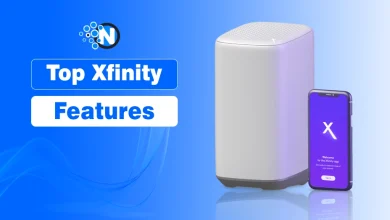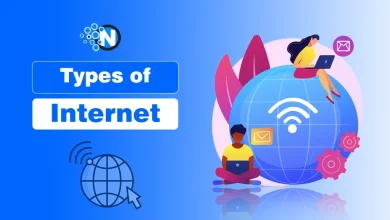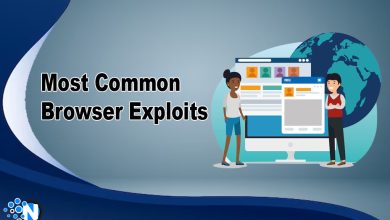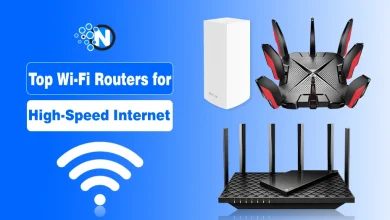How to Get Most from the Internet in Day to Day Life?

Smartphones, computers, and high-speed internet have become an important part of our day-to-day lives. They not only make things easier but increase overall performance and efficiency as well. These are used for almost everything in both our personal and professional lives.
Most people use them for online learning, communicating with overseas friends or family, booking a quick ride, ordering food, buying groceries, completing business-related tasks, sending quick emails, and so on.
Some useful tips on how we get the most from the internet in day to day life i.e. personal and professional life are detailed below.
<mark style="background-color:rgba(0, 0, 0, 0);color:#0061fb" class="has-inline-color">Tips to Get Most from the Internet in Day to Day Life</mark>
Internet is wholly integrated into all walks of life and helps us a lot in doing several things whether at home, in the office, or on the go.
From getting useful information on the go to ordering meals online and booking a cab right from your smartphone. But all in that is how you can positively make the most from the internet in day to day life.

1. Quick Access to Useful Information
Quick access to required information and details is one of the incredible uses of the internet. Whether you need some information about your course subjects, a business-related task, or a health issue, you can get ample information and data within a matter of moments.
No matter you are using a smartphone or desktop computer to learn more about something important, you will be provided with quick access to a lot of online resources that are relevant to your queries.
However, developing strong information literacy skills is crucial, as the overwhelming volume of content online requires the ability to evaluate sources critically and identify reliable information.
<strong>💡<strong><strong>Pro Tip:</strong></strong></strong>
Create bookmarks for trusted information sources in different categories (health, news, education, etc.) to quickly access reliable information when needed. Consider using fact-checking websites like Snopes.com or FactCheck.org when encountering questionable claims online.
2. Communication and Collaboration
The Internet is the most popular means of communication. We are using emails instead of sending traditional letters. A lot of instant messaging apps like WhatsApp, Facebook Messenger, and Zoom are out there that allow us to connect in real time.
Even we can make video calls with our overseas friends and family members to see each other while talking. Additionally, cloud-based productivity tools like Google Apps, Microsoft Teams, and Slack have updated workplace collaboration tools.
| Communication Purpose | Recommended Tools | Best For |
|---|---|---|
| Personal Messaging | WhatsApp, Telegram, Signal | Secure, private conversations |
| Video Conferencing | Zoom, Google Meet, FaceTime | Virtual meetings, family calls |
| Work Collaboration | Slack, Microsoft Teams, Asana | Project management, file sharing |
| Social Networking | Facebook, Instagram, LinkedIn | Building connections, networking |
| Email Communication | Gmail, Outlook, ProtonMail | Formal communications, subscriptions |
3. Entertainment
Internet is the entertainment hub these days. Gone are the days when people were watching TV shows according to a specific timetable. Now people can find and watch their favorite TV shows, music videos, and movies via online streaming platforms like YouTube and Netflix whenever they want.
App stores are full of mobile games and other entertainment apps that allow users to enjoy their favorite games and other entertaining materials right on their smartphones. People can also watch their favorite videos or play online games with each other from different locations and territories. It helps them enjoy themselves with friends without facing barriers of time and location.
<strong>💡<strong><strong>Pro Tip:</strong></strong></strong>
Many streaming services offer family plans that can be shared with multiple users, reducing costs. Also, look for bundle deals that combine multiple services for a discounted rate.
Popular Digital Entertainment Categories:
- Streaming Services: Netflix, Hulu, Hurawatch, Disney+, HBO Max, Amazon Prime
- Music Platforms: Spotify, Apple Music, YouTube Music, Tidal
- Gaming: Mobile games, PC gaming platforms (Steam), console gaming networks
- Podcasts: Educational, entertainment, true crime, technology
- E-books & Audiobooks: Kindle, Audible, library apps like Libby
- Virtual/Augmented Reality: Oculus, PlayStation VR, AR mobile applications
4. Online Purchases
Whether it is your favorite Pizza, grocery items, pair of clothes, or electronics, all you can buy online within a few clicks. The Internet has made shopping a lot easier and quicker than ever before. Popular brands and companies are offering online shopping with their custom-built apps.
Ecommerce stores like Amazon are also known as one-stop places to buy anything ranging from mobile accessories to dream cars. The development of secure payment gateways and digital wallets has further streamlined the online shopping experience for contactless transactions that are both convenient and secure.
<strong><strong>Online Shopping Safety Checklist:</strong></strong>
✅Shop on secure websites (look for “https://” and a padlock icon)
✅Use strong, unique passwords for shopping accounts
✅Monitor your credit card statements regularly
✅Read reviews before purchasing from unfamiliar retailers
✅Be cautious with deals that seem too good to be true
✅Use trusted payment methods with buyer protection
✅Consider using virtual credit cards for additional security
✅Install anti-malware software on your devices
For better experience, you should install price comparison browser extensions like Honey or CamelCamelCamel to automatically find the best deals and apply coupon codes when shopping online.
5. Internet for Education
The Internet has changed almost every walk of life and the education industry is no exception. We can now learn course subjects and other professional skills online even without attending traditional classes. It allows students and other knowledge seekers to learn anywhere anytime as per their learning abilities and flexible schedules.
The Internet is full of learning sources that students can utilize to gain quick access to required learning materials and tools like Z Library and PDFnet.
The growth of Massive Open Online Courses (MOOCs), interactive learning platforms, and specialized learning apps has democratized education has made high-quality learning accessible to anyone with an internet connection.
| Learning Goal | Online Resources | Features |
|---|---|---|
| Academic Courses | Coursera, edX, Khan Academy | University-affiliated courses, certificates |
| Professional Skills | LinkedIn Learning, Udemy, Skillshare | Industry-relevant training, project-based learning |
| Language Learning | Duolingo, Babbel, Rosetta Stone | Interactive lessons, speech recognition |
| Coding & Tech | freeCodeCamp, Codecademy, GitHub | Hands-on programming, community support |
| Creative Skills | YouTube tutorials, Masterclass | Expert instruction, visual demonstrations |
6. Social Networking
The latest social media apps and websites help you check out someone online and connect with them in a more human approach. People can explore diverse perspectives, build relationships, stay informed about current events, and advocate for social causes through social media.
There are so many social media platforms available and Facebook, Instagram, Pinterest, LinkedIn, and X are some of them with billions of monthly active users.
Both individuals and organizations benefit from social networking by establishing a presence on these platforms. Understanding privacy settings and practicing digital citizenship are becoming essential skills as our social lives increasingly move online.
Healthy Social Media Habits:
- Set time limits for social media usage
- Design your feed to include positive and inspiring content
- Be mindful of privacy settings and what you share
- Take regular breaks from social platforms
- Verify information before sharing or reposting
- Focus on meaningful interactions rather than passive scrolling
<strong>💡<strong><strong>Pro Tip:</strong></strong></strong>
Use built-in tools like Instagram’s “Take a Break” feature or screen time management settings on your phone to maintain a healthy balance with social media. Consider periodic “digital detoxes” to reset your relationship with these platforms.
7. Health and Wellness Management
The we manage our health and wellness is also changed to much extent due to multiple advancements in internet. Now, there are digital tools from fitness tracking apps to electronic health records to monitor and improve our well-being.
Medical information websites allow us to research symptoms and conditions, while online pharmacies make prescription management more convenient. Virtual support groups connect people with similar health challenges to community and resources regardless of geographic location.
Digital Health & Wellness Resources:
| Category | Examples | Benefits |
| Fitness Apps | Strava, MyFitnessPal, Nike Training Club | Track workouts, nutrition, set goals |
| Meditation & Mindfulness | Headspace, Calm, Insight Timer | Stress reduction, better sleep, focus |
| Telemedicine | Teladoc, Amwell, Doctor on Demand | Remote consultations, prescription refills |
| Health Trackers | Apple Health, Fitbit, Samsung Health | Monitor vital signs, activity levels |
| Mental Health Support | BetterHelp, Talkspace, 7 Cups | Online therapy, counseling, support |
<strong>💡<strong><strong>Pro Tip:</strong></strong></strong>
When researching health information online, prioritize sources from established medical institutions like Mayo Clinic, Cleveland Clinic, or WebMD. Always consult with healthcare professionals before making significant changes to your health based on online information.
<mark style="background-color:rgba(0, 0, 0, 0);color:#0061fb" class="has-inline-color">Concluding Statement</mark>
The widespread internet technology has multiple benefits for the professionals and students. But where comes the actual hurdle? simply, have no idea about the way or strategy to achieve that in a particular manner. They become lazy about getting the desired goals while thinking it a potentially useless.
However, the strategies I have explained here are the best way to reach higher levels. After following these, it will become easier for you to get through those easier.




